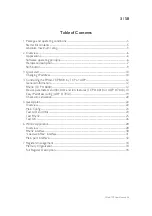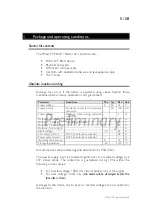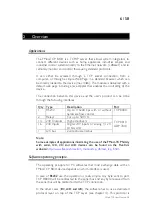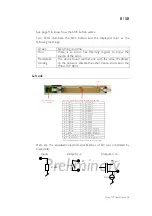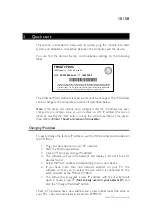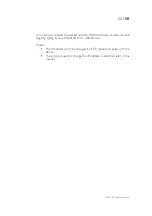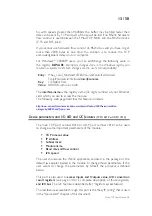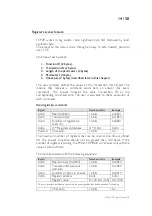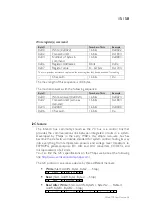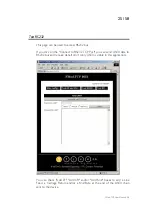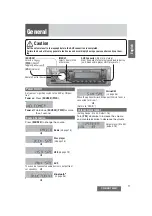
16 / 58
To be able to do all of these 3 sequences, use this command:
Byte#
Number of bits
Example
0x00
I2CRWwithAck (0x0007)
16 bits
0x0007
0x02 TransactionID
16
bits
0x1B34
0x04
LengthOfParameters (X + 3)
16 bits
0x0005
0x06
7 bits Address (bit 7 = 0)
8 bits
0x28
0x07
X (number of bytes to write)
8 bits
0x02
0x08 xBytes
X
bytes
0xAF1D
….
Y (number of bytes to read)
8 bits
0x05
The four previous entries can be replicated to access the same or other I2C slaves within this
command sequence.
Checksum
16
bits
0x…
If X = 0, the Read method is used.
If Y = 0, the Write method is used.
If X & Y
≠
0, the Read after Write method is used.
The answer sequence is the following one:
Byte#
Number of bits
Example
0x00
I2CReadAnswer (0x0008)
16 bits
0x0008
0x02
TransactionID (same as
demand)
16 bits
0x1254
0x04
Number of bytes in answer
16 bits
0x0005
0x06
Answer bytes
Y bytes
0x1A25…
…
Ack state of the I2C com.
1 byte
0x87
If the same or other I2C slave have been accessed in the command, the answer bytes and ack
state is added here.
… Checksum
16
bits
0x…
The "Ack state" byte is composed of the following bits:
0
Address ack in write sequence
0 = No answer to this address
1 = ack received
1
Bytes written ack (each byte was acked)
0 = Bytes not acknowledged
1 = ack received
2
Address ack in read sequence
0 = No answer to this address
1 = ack received
3-6 Reserved
-
7
Must be always 1
1
The user can use these bits to check for the presence of his I2C devices and
monitor hardware issues.
FMod-TCP User Manual v.2.8


